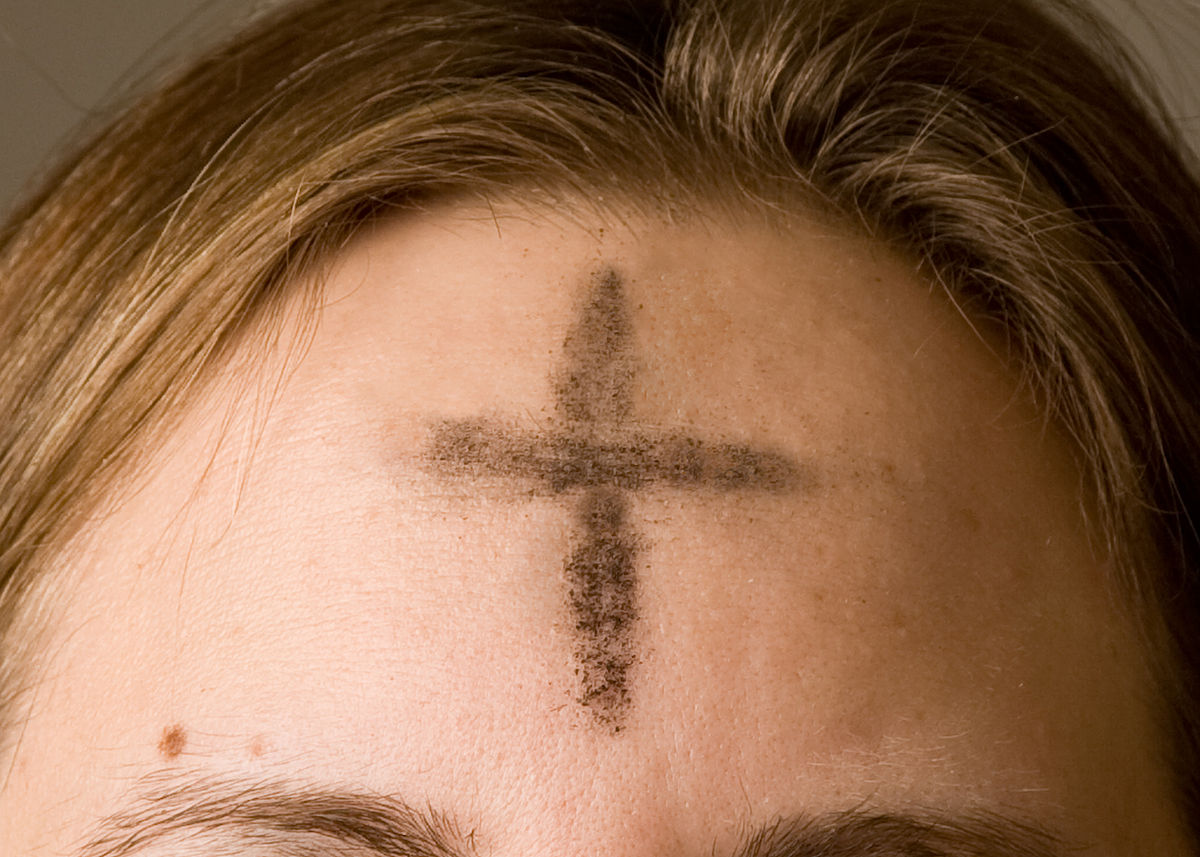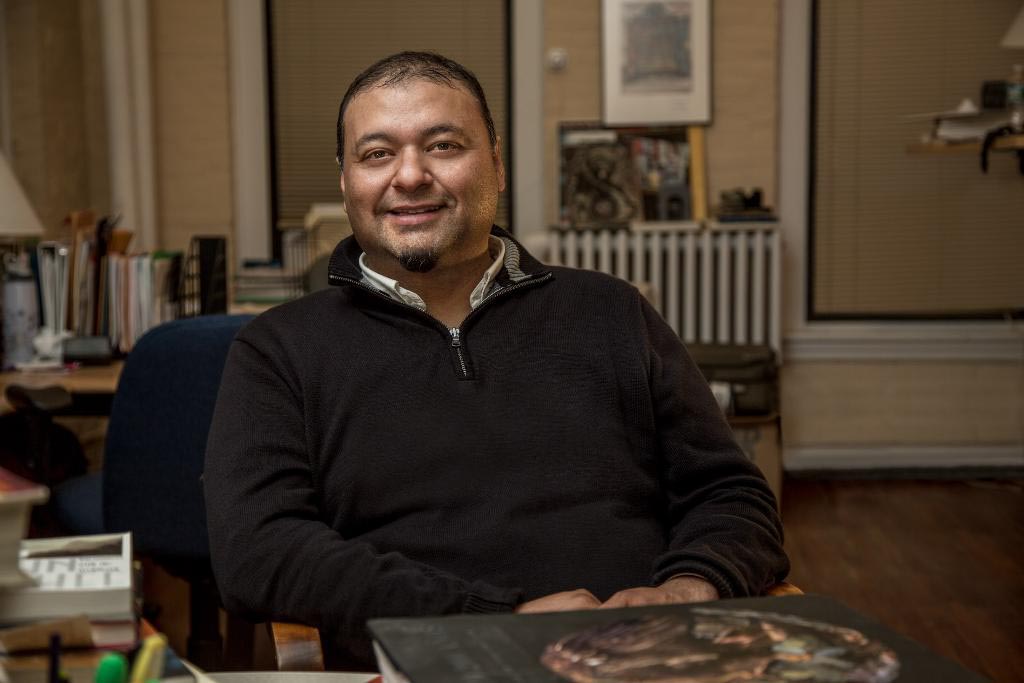
- Details
- By Pedro Noé Morales
Guest Opinion. Entering the period known as lent in the Christian tradition is to enter a period of reflection, to repent for our sins, and to prepare our bodies and souls for the sublime sacrifice of Christ on the cross. This 40-day period begins with Ash Wednesday and ends on Holy Thursday, when the high days of Holy Week take over.
In my childhood, living in partial wretchedness in the Mexico-U.S. Borderlands, Ash Wednesday meant seeking connection and relief from the only God I was allowed to know and worship by attending these important annual rituals. I was taught that a good Christian, in these special times, is expected to read sacred scripture, donate money and/or perform good deeds of charity, and devote time to justice as a way to please God.
My forehead was smeared with ashes; a Priest with a solemn voice said: “Remember, you are dust and to dust you shall return.”
He meant dust as in dirt, as in “you are nothing,” which is quite a thing to say to a poor young man trying to grow up, escaping daily dangers on a land plagued by violence and neglect.
Want more Native News? Get the free daily newsletter today.
No one escaped those ashes of atonement, not even the Indigenous Raramuri or the Yaqui who lined the church threshold, hoping some of that Christian charity would materialize.
I used to walk quickly through those doors hoping to avoid those Natives, because I never had anything to give them and I felt shame. Even at that early time in my development, I could tell they had been wronged, though at the time I was not sure how or when, but I had a terrible feeling by whom.
Yet, in my mind I could not imagine how a priest would dare tell these people they were dirt, and to dirt they will return. That seemed not only wrong but, given their condition, an overkill. Yet some of the older Natives had the mark of the black cross on their foreheads as they went about their business begging for spare change, trying to sell candy or handmade little brown dolls dressed in Indigenous attire.
Those Native faces never left me. Neither did that uncomfortable emotion I felt, as I saw them struggle by the Church doors. Their images in my head confronted me without relent, and woke me at times in dark nights, out of breath.
Their powerful well-defined facial lines seemed sculpted from ancient bronze. They stood in silence, the wind blowing their straight black hair, their dignified stare sent chills to the depths of me, often compelling tears of confusion, helplessness, and quiet frustration.
It always seemed curious to me that European Christians would choose words like “dust” to instill a sense of lowliness we as humans have in the presence of God, which by implication represents highness.
Who knows better about dust than these Natives? Have they not been made to feel as insignificant as dust before the all-important presence of the Christians? Has their historical abuse in the name of Christianity ever been a cause of repentance by Christians?
What I am getting at is this: Is Christ okay with genocide and land-grabbing in his name? And, after the bloody deeds have been committed, is he okay having Natives be reduced to beggars outside his churches, in their own land? How does Christianity come to terms with that?
I don’t think we have enough ashes for Christianity’s collective forehead to smear as a reminder of its need for atonement, for its cruelty and hypocrisy in its treatment of Natives in the Americas.
In fact, if Christians would step outside their ignorance for a second and pay due regard and attention to the religious beliefs and practices of most Natives, they would come to understand that for these Nations air, animals, rocks, mountains, bodies of water, skies, the land itself are all saturated with the essences of the Creator and the ancestors.
Including dust. In fact, we are made of it, and it is therefore sacred dust, not dirt, which is the way the phrase suggests in Christianity’s Ash Wednesday.
When Pope Gregory the Great (590-604) established the Days of Ashes or Dies Cinerum he hoped to signify humility and mortality, and meant it as a sign of pain or sorrow for the sins committed, which pushed the people from God.
This practice was later picked up by the Anglo-Saxon Church in the 10th century and eventually achieved widespread appeal and implementation throughout Western Churches until it was made a universal practice in the Synod of Benevento in 1091. Pope Gregory did not anticipate the moral dilemma this very public inclusion of a Christian symbol would acquire with the passage of time.
It is a well-known fact that Christianity’s record of abuse worldwide is a mile high. In fact, as I write these lines, one majority Christian nation has invaded another majority Christian nation, without a clear reason or provocation. The result has been a large toll of dead bodies and refugees fleeing for cover. The horror show continues, and we watch it unfold from a distance.
This terrible history-shaping drama brings me back to the times of the Christian invasion into Native lands in the Americas. I wonder if, as it was unfolding, millions of Christians were ordered to repent for their sins, and do penance before the arrival of the Lord? How many Christians knew about the horrors unleashed on the occupied lands in their names, as soldiers reduced sacred Native lives and cultures to ashes?
How many spoke up? How many decided to shield themselves from the terror of our shared history, as long as the bodies and the miseries were not at their doorstep?
The answers to these questions took me years of deep thought and self-reflection to resolve, because I had to admit that my own Christian upbringing is an extension of a deeper pattern of concealment of the true history of the white, European, Christian presence in our midst, on both sides of the border.
There is no true progress to be made in any nation that refuses to look at itself in the mirror, that fails to admit its wrong doings, and that lacks the courage to reckon with its true history.
The gains of some within that society will always be at the expense of those who came before, and whose ruin paved the way for the comfort and benefits enjoyed by society at large.
This is what I now understand, and to a large extent helps explain the uneasiness I felt all those times when I saw the Indigenous faces at the Church threshold and in dreams.
I was denied by both Church and State governments–on both sides of the border–of my own connection to these Native faces. In my veins runs their blood, as does the blood of the invaders.
However, now the official efforts to conceal their humanity no longer holds power over me.
I cannot reverse all the damage inflicted upon us by Christians in the Borderlands.
What I can do is raise my voice to demand that Christians live up to the true meaning of their days of ashes, and that governments up and down the Americas recognize and pay due respect and reparations to the Native nations from whom so much has been taken.
As I use my own Mestizo-voice in the public arena, to the Native nations of my past I say I am proud and grateful for every drop of blood they have given me, for their courage under so much violence and abuse, and for their grace.
And for their grace. And for their grace!
More Stories Like This
Thanksgiving: Part of "Broken Circle Holiday"Thanksgiving is a Tradition. It's Also a Lie
Decisions About Us, Without Us: Education Dismantling Ignores Tribal Nations
What the Seismic Shift in Indian Education Could Mean
Cherokee Nation Helps Make Rural Transit Possible
Help us tell the stories that could save Native languages and food traditions
At a critical moment for Indian Country, Native News Online is embarking on our most ambitious reporting project yet: "Cultivating Culture," a three-year investigation into two forces shaping Native community survival—food sovereignty and language revitalization.
The devastating impact of COVID-19 accelerated the loss of Native elders and with them, irreplaceable cultural knowledge. Yet across tribal communities, innovative leaders are fighting back, reclaiming traditional food systems and breathing new life into Native languages. These aren't just cultural preservation efforts—they're powerful pathways to community health, healing, and resilience.
Our dedicated reporting team will spend three years documenting these stories through on-the-ground reporting in 18 tribal communities, producing over 200 in-depth stories, 18 podcast episodes, and multimedia content that amplifies Indigenous voices. We'll show policymakers, funders, and allies how cultural restoration directly impacts physical and mental wellness while celebrating successful models of sovereignty and self-determination.
This isn't corporate media parachuting into Indian Country for a quick story. This is sustained, relationship-based journalism by Native reporters who understand these communities. It's "Warrior Journalism"—fearless reporting that serves the 5.5 million readers who depend on us for news that mainstream media often ignores.
We need your help right now. While we've secured partial funding, we're still $450,000 short of our three-year budget. Our immediate goal is $25,000 this month to keep this critical work moving forward—funding reporter salaries, travel to remote communities, photography, and the deep reporting these stories deserve.
Every dollar directly supports Indigenous journalists telling Indigenous stories. Whether it's $5 or $50, your contribution ensures these vital narratives of resilience, innovation, and hope don't disappear into silence.
 The stakes couldn't be higher. Native languages are being lost at an alarming rate. Food insecurity plagues many tribal communities. But solutions are emerging, and these stories need to be told.
The stakes couldn't be higher. Native languages are being lost at an alarming rate. Food insecurity plagues many tribal communities. But solutions are emerging, and these stories need to be told.
Support independent Native journalism. Fund the stories that matter.
Levi Rickert (Potawatomi), Editor & Publisher

